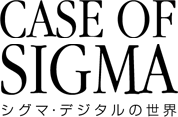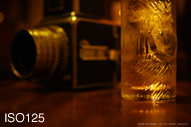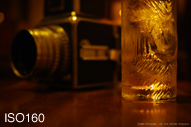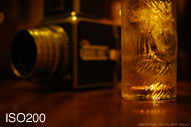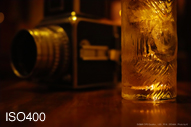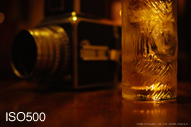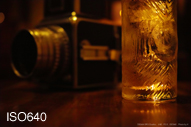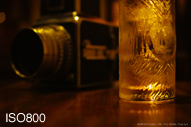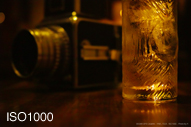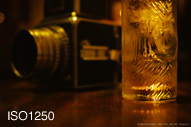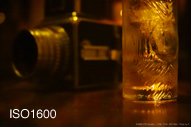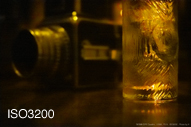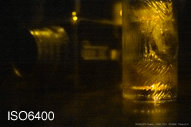
SIGMA dp2 Quattro | SHOOTING REPORT
The image sensor is the new generation "Quattro." Although it continues to employ the vertical color separation technology, but this new generation sensor acquires the luminance information only with the top layer (B layer), and the remaining middle (G) and bottom (R) layers capture color information only. I can say that this change has simplified the data processing because the luminance information captured by the top layer is only reflected on the bottom two layers. And, we can also expect data reduction as well as improved high sensitivity performance. The Merrill models had the substantially improved tonal range, so I was more than excited to examine the power of the new generation "Quattro" sensor.
( Photo/Text : K )

I think Foveon users are captivated by its extremely sharp but natural resolution and realistic color reproduction. It generates stunning output if it hits the bull's eye. Meanwhile, in low light situations, it struggles to separate colors in the mid-tone and they are left in the labyrinth of colors. Yet, the unique output more than makes up for such weakness, users repeat trial and error. The dp2 Quattro has overcome such difficulty. The color balance is quite natural even on JPG. Better yet, the wide tonal range and the overwhelming resolution are maintained. In short, the renovation made it possible to generate high Foveon quality images without difficulty.

As always, it depicts in great detail and the subject pops up from the background. Also, color reproduction is truly deep. The former models would generate green color on the edges of bokeh when shot wide open, but the dp2 Quattro is far more natural. I've been using the DP series since the first model, and now I feel that the unruly boy has become such a gentleman.

As I mentioned at the previous sample, Foveon cameras struggle to capture this kind of subject, but there's no unnatural color addition on the edge line. And, what an excellent lens it is. The bokeh around the edge of the coffee cup is so soft. And, the image passed through the lens is captured and processed by the body. As a result, the picture quality becomes beyond description. The glossy texture of the China looks just wonderful.

It's sharp enough wide open, and it becomes tremendously sharp if you stop down to around F5.6. Again, the combination between the ultra high-resolution sensor and the masterly lens is powerful. Without the tonal reproduction capability, it would be impossible to reproduce the texture of the glass blocks. I can only say I'm thrilled with the picture quality.

Sigma says the resolution has increased by about 30% because of the slight increase of the number of pixels. And, I can feel it, too. I focused on the handrail in the center and stopped down to F4.5. Generally, with this focal length, the person would not be defocused. However, on this shot, he's slightly out of focus. And, I can see it even on this image size. When digital cameras were emerging, professional photographers used to say, "Digital cameras don't focus anywhere." because everything was defocused and looked ambiguous. Although this issue has been moderated drastically by removing the lowpass filter from the sensor, the Foveon sensor clearly displays where the focus is. Not to mention, it has a direct impact on the picture quality.

It was early in the morning. From my experience, I could expect the grand yellow-tinted leaves, but the color reproduction was loyal to the real scene. This time, I mostly shot using the auto white balance, and as a long-time Sigma user, I'm deeply touched to find this natural color reproduction. And, I can also feel the improvement of the image clarity.

Even a bayer pattern sensor can generate very sharp images if it doesn't have the lowpass filter. So, there may be smaller difference of the sharpness between the bayer pattern and the Foveon sensors. But even so, I'm quite sure that the Foveon cameras generate sharper images and they resolve more naturally. Maybe this naturalness is more important than sharpness. By clicking here, you can view the original image file and I want you to take a close look at the splashes.

The Yakushi Nyorai Statue at Daienji, Meguro. They say if you put the gild on the section you have problems, they will be healed. What a wonderful color reproduction of the gild!

I think many Foveon users want to keep the ISO as low as possible, but the dp2 Quattro has better high sensitivity performance. Putting the camera on the table, I fixed the white balance to daylight in order to realize the mood, and I shot under the tungsten light using all ISO sensitivity. Color noise becomes noticeable over ISO1000, but I think it's usable up to ISO1600 and I personally have no problem up to ISO800. With the Merrill sensor, resolution would start to be degraded and become noisy over ISO400. This means that the high sensitivity performance has improved by about two steps. Anyone who aren't happy with this?

And, with the Foveon, I can't help but shooting metal objects. As expected, it does an outstanding and better job.

Another shot of the Alfa Romeo with a different angle. The color is just sexy. Whether it's Alfa red or Ferrari red, it's a difficult color to produce with digital cameras. This red reproduction must be credited to the Foveon sensor.

All shots in this report are the JPG files shot together with the RAW files. It has been a common sense for the Foveon users to develop the RAW file format on PC, but I can't stress enough the high quality of the JPG images because their resolution and tonality are almost equal to the RAW files. This was a big surprise. And, both in terms of auto white balance and tonality, the new DP has become so friendly. The former models had required a certain level of developing skills and understanding of colors, but with the dp2 Quattro, you can get the transcendental Foveon image quality in the JPG format generated directly from the camera. In addition, the linearity of the LCD picture quality has improved. Plus, I felt the AF has become more accurate. In conclusion, without a doubt, the dp2 Quattro ahs risen to the new dimension both in terms of picture quality and the body. Yes, the body has become larger, but it's nothing but exciting to capture the digital medium format quality images with this small body. And, you can hold it more securely if you use both hands. I think this is a message from SIGMA: take a deep breath and take great pictures. Although it depends on individuals, I was able to shoot at 1/15 handheld without causing camera shake. The body shape is also due to the larger battery. It showed 50% remaining after taking 189 shots, so with one battery I think we can shoot up to about 300 pictures.

Originally, it was SIGMA who released the first category killer compact digital camera with a large sensor. Although the dp2 Quattro has become large too large to be called "compact," in fact, this is a practical size to take the full advantage of the high potential and I feel it's easy to hold and handle. I could even say they have created a new category - a minimum size camera to realize the ultimate capturing of the daily scenes. I recommend this camera not only to the existing Foveon users, but also to someone who want a mirrorless camera that generates superb quality images. This time, I was able to use it only for two days, so next time I'd like to take more time trying what I can do with this new category killer or creator.
( 2014.06.20 )
